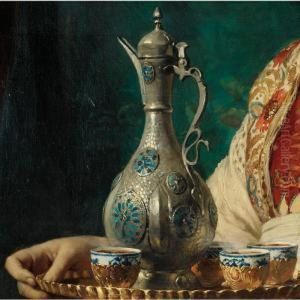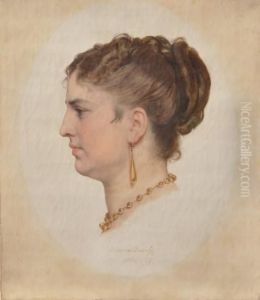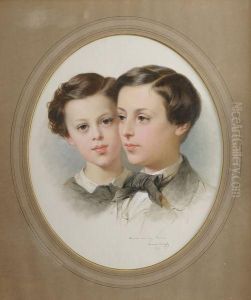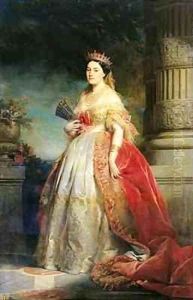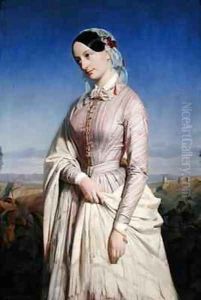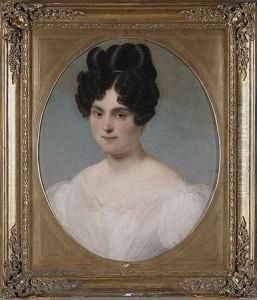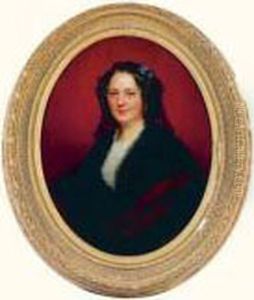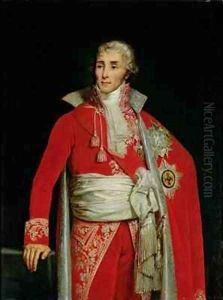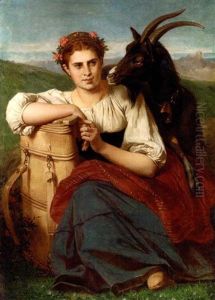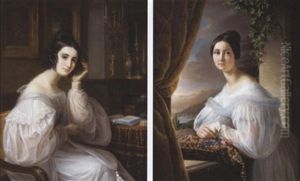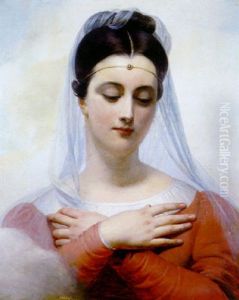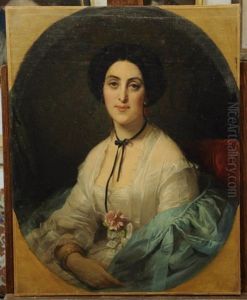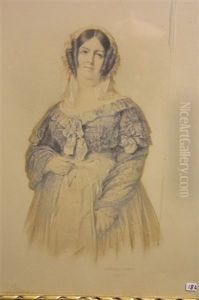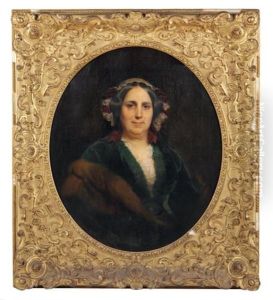Edouard Louis Dubufe Paintings
Édouard Louis Dubufe was a French portrait painter, born in Paris on March 31, 1819. He descended from a family of artists, with his father Claude Marie Dubufe being a successful painter. Édouard was trained by his father and also attended the École des Beaux-Arts where he studied under Paul Delaroche. Early in his career, Dubufe established himself as a sought-after portraitist in the Parisian society. He was particularly known for his skill in capturing the likeness and elegance of his sitters, which included members of the French aristocracy and bourgeoisie, as well as figures from the worlds of politics and culture.
Dubufe's style was characterized by a fine attention to detail, rich coloration, and a clear influence from the neoclassical tradition, which was then being challenged by the emerging Romantic movement. He exhibited his work at the Paris Salon, the official art exhibition of the Académie des Beaux-Arts in Paris, and received considerable acclaim. His portraits were praised for their sophistication and realism, and he was compared favorably to his contemporaries.
Apart from portraits, Dubufe also worked on historical and mythological subjects. He completed several large-scale commissions, including works for the Emperor Napoleon III's apartments. His success allowed him to travel, and he spent some time in England, where he was also well received.
During the Second French Empire, Dubufe's reputation continued to grow. He was commissioned to create portraits of Emperor Napoleon III and Empress Eugénie, which further solidified his position as one of the leading portraitists of the era. His work from this period reflects a certain imperial grandeur, aligning with the tastes and aspirations of the French court.
Édouard Louis Dubufe's career was not without challenges, however. The rise of photography and changes in artistic tastes eventually led to a decline in traditional portraiture's popularity. Nonetheless, Dubufe continued to work and adapt his style throughout his life. He passed away on August 11, 1883, in Versailles. His works remain a significant part of French 19th-century art history and continue to be studied and exhibited in museums around the world.




